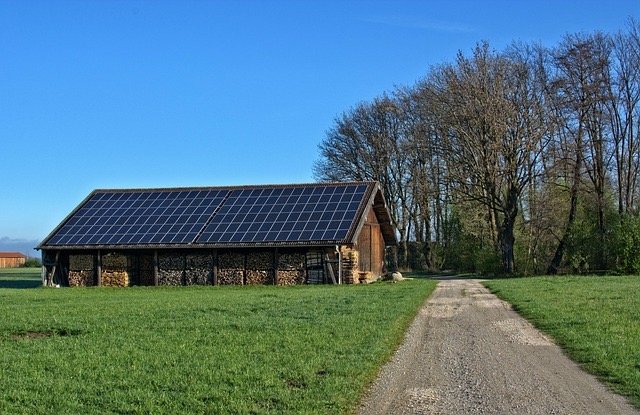
Eco-friendly energy solutions provide a promising path toward a greener future.Powering our lives with energy is essential, but how we generate that energy matters.
As environmental concerns grow, there is an urgent need to shift to sustainable energy sources.This guide will explore various renewable energy sources and actionable steps we can take.
The Urgent Need for Sustainable Energy Climate change and pollution are pressing global issues.
Traditional energy sources, like coal and oil, release harmful emissions.
These contribute to air and water pollution, impacting health and ecosystems.
By switching to cleaner energy options, we can tackle these problems head-on.
Eco-friendly energy options contribute to a decrease in our carbon footprint. They harness natural resources like sunlight, wind, and water.
Not only do these options lower emissions, but they also promote energy independence and sustainability. What This Guide Will Cover
This guide will discuss: Solar power Wind energy Geothermal energy Hydropower Energy efficiency and conservation Each section will provide insights on how these solutions work and their benefits.
Eco-friendly energy solutions Solar Power: Harnessing the Sun’s Energy
Harnessing solar energy has become more common.
Solar panels turn sunlight into electricity for homes and businesses. These panels consist of photovoltaic cells that capture sunlight and produce direct current (DC) electricity.
An inverter changes this DC electricity into alternating current (AC), making it usable for daily activities. Real-World Examples of Successful Solar Installations Tesla
Solar Roof: This innovative roofing system blends seamlessly with home designs while generating energy. Residential Solar Systems:
Homeowners can install panels on rooftops or in yards, significantly reducing energy bills. Cost Savings and
Government Incentives Switching to solar can lower monthly energy bills. Governments offer tax credits and rebates, making it cheaper to install solar systems. In some cases, net metering allows homeowners to sell excess energy back to the grid.
Eco-friendly energy solutions.Wind Energy:
Utilizing Nature’s Power Wind energy captures the power of moving air. Wind turbines transform the movement of wind into electrical power.
Types of Wind Turbines and Their Applications Horizontal-Axis Turbines: These are the most common type, featuring blades that face into the wind. Vertical-Axis Turbines: These turbines capture wind from any direction and are suitable for smaller installations. Large-Scale Wind Farms vs. Small-Scale Wind Turbines Large wind farms can generate significant amounts of electricity, supplying power to thousands of homes. Small-scale turbines are ideal for individual households, providing energy for personal use. Environmental Impact and Considerations Wind energy is clean, producing no emissions.However, turbine installation requires land. Careful planning helps protect wildlife and minimize land use.
Geothermal Energy Works
Geothermal energy is a sustainable power source that utilizes the heat found beneath the Earth’s surface. This method provides a dependable form of energy that is environmentally friendly. How Geothermal Energy Works
Geothermal power plants capture steam from hot underground water.Steam powers turbines that are linked to generators, which create electricity.
Geothermal Heating and Cooling Systems in Homes and Businesses Geothermal heating systems pump heat from the ground into buildings for warmth. In summer, the cycle reverses, cooling spaces using underground heat.
Case Studies of Successful Geothermal Projects The Geysers in California: This is the largest geothermal complex in the world, supplying significant power to the state. Iceland’s Geo-Heating Systems: Iceland uses geothermal energy for heating homes, showcasing its efficiency. Hydropower
Hydropower: Eco-friendly energy solutions
Harnessing the Power of Water Hydropower captures energy from flowing water, generating electricity. Different Types of Hydropower Systems Dams: These store water in reservoirs and release it to generate power. Run-of-River Systems: These generate electricity without large reservoirs, minimizing environmental impact. Environmental Impact and Mitigation Strategies Hydropower can disrupt ecosystems and fish migration. Implementing fish ladders and carefully planning dam locations helps mitigate these effects.
The Role of Hydropower in Renewable Energy Portfolios Hydropower is a key player in renewable energy. It provides reliable base-load electricity, supporting grids as other sources, like wind and solar, fluctuate. Energy
Efficiency and Conservation: Reducing Energy
Consumption Becoming more energy-efficient is just as crucial as generating clean energy. Home Energy Audits and Upgrades Regular energy audits identify how homes waste energy.
Simple upgrades, like better insulation or energy-efficient appliances, can save money and reduce consumption. Smart Home Technology for Energy Management Systems like smart thermostats and smart plugs allow homeowners to manage energy use remotely.
These devices help optimize energy consumption by learning habits and adjusting settings automatically. Behavioral Changes for Energy Conservation Small actions can lead to big savings.
Turning off lights, unplugging devices, and using energy-saving modes on appliances all help reduce energy use.
Conclusion:
Embracing a Sustainable Energy Future Key Takeaways and Actionable Steps Switching to eco-friendly energy solutions is possible for everyone.
Small changes in behavior can also lead to significant energy conservation. The Long-Term Benefits of Eco-Friendly Energy Embracing renewable energy not only helps the planet but also leads to lower utility bills and energy independence.